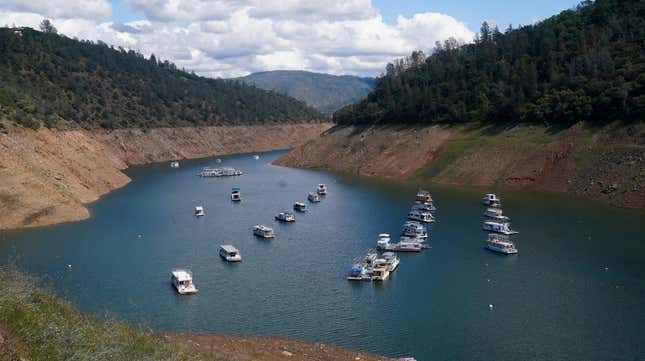
Water inside of California’s largest reservoirs is disappearing fast.
Water storage in the state is supposed to be at its highest this time of year, a sobering forecast of how low water levels may be this coming summer. Lake Oroville is at about 55% of its usual capacity, the LA Times reported. Shasta Lake reservoir is a bit worse—it’s currently at 40% of regular capacity, which is the lowest the lake has been this time of the year since record-keeping began in 1977. The levels are low enough in this reservoir that hydropower generated may be affected for residents in the area, KRCR-TV reported.
Photos of Shasta Lake show a tree line followed by feet of empty ground that used to be covered by water. Houseboats floating in Lake Oroville look out of place, almost too big to be in some sections of the water.
California’s snowpack, which usually melts and feeds into waterways across the state in the spring, was alarmingly low this year. In fact, this past winter was recorded as one of the driest winters in 128 years. In late March, California Department of Water Resources officials set out to conduct the annual snowpack measurement near Lake Tahoe and found only 2.5 inches of snow where there should have been about 5 feet.
Just one state over, in Nevada, Lake Mead is also rapidly drying up. So much so that human bodies that have been long concealed in the lake are starting to emerge. At the very beginning of this month, skeletal remains inside of a barrel were discovered, and this past weekend, visitors to a recreation center at the lake discovered another set of bones. Lake Powell, another large reservoir along the Colorado River, is also at historic lows and might soon be unable to generate hydropower.
More large waterways across the Southwest are likely to recede as this historic megadrought continues.